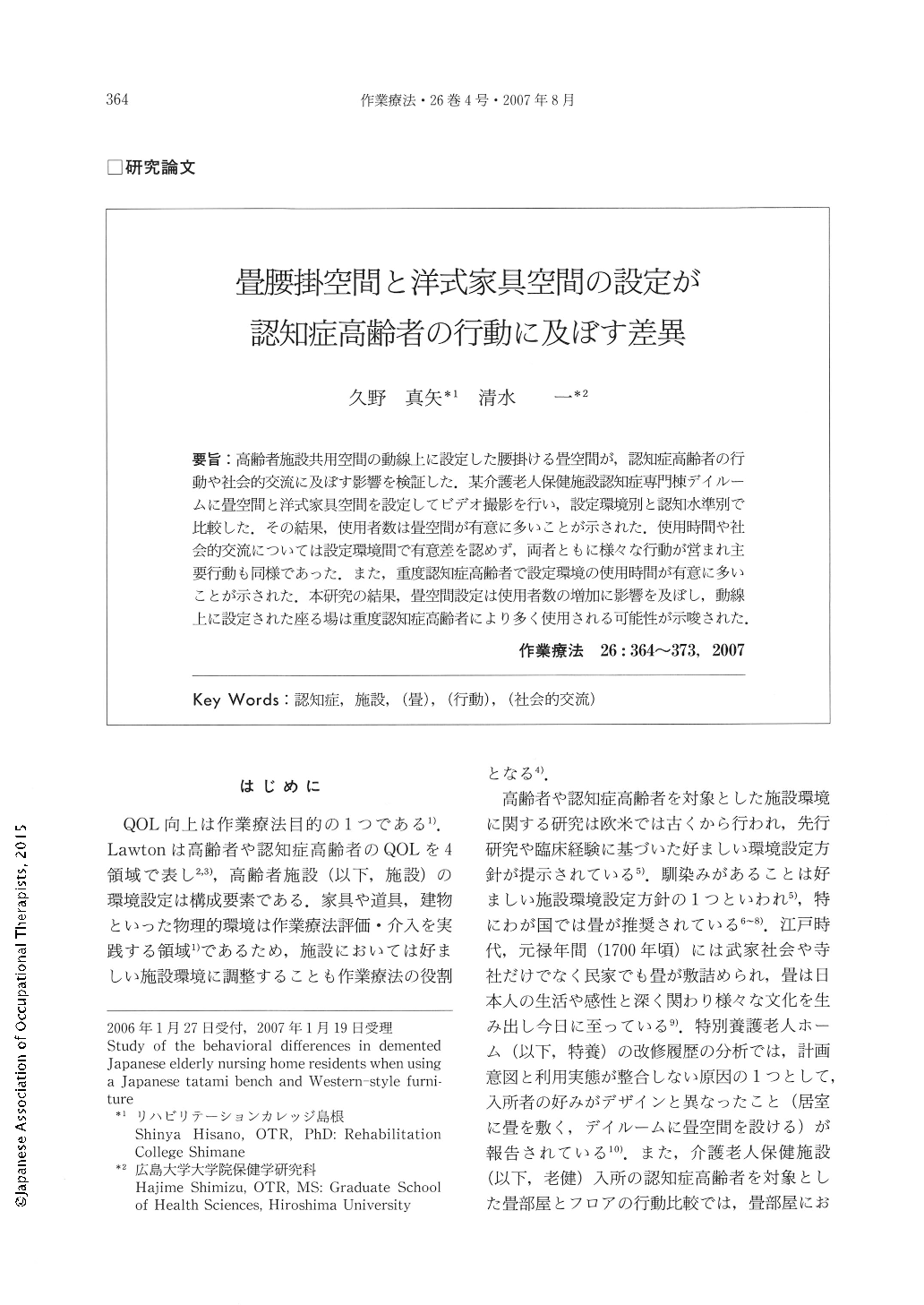Japanese
English
- 販売していません
- Abstract 文献概要
- 1ページ目 Look Inside
- 参考文献 Reference
- サイト内被引用 Cited by
要旨:高齢者施設共用空間の動線上に設定した腰掛ける畳空間が,認知症高齢者の行動や社会的交流に及ぼす影響を検証した.某介護老人保健施設認知症専門棟デイルームに畳空間と洋式家具空間を設定してビデオ撮影を行い,設定環境別と認知水準別で比較した.その結果,使用者数は畳空間が有意に多いことが示された.使用時間や社会的交流については設定環境間で有意差を認めず,両者ともに様々な行動が営まれ主要行動も同様であった.また,重度認知症高齢者で設定環境の使用時間が有意に多いことが示された.本研究の結果,畳空間設定は使用者数の増加に影響を及ぼし,動線上に設定された座る場は重度認知症高齢者により多く使用される可能性が示唆された.
We studied the behavioral differences in the demented elderly in response to two different setting styles for four days each in a nursing home. One setting was a Japanese tatami bench in the common day room area. The other had Western-style furniture placed in the same common day room area. This free day room space is located between the residential rooms and the dining room.
The actions of the demented elderly were video-taped, and the number of users, length of use, types of social interaction, and rate of interactions were recorded.
No differences were found between the two styles for the length of use, types of social interaction, its rate of setting styles, and level of cognition of the demented residents. However, there was a difference in number of users. More residents used the tatami bench, and also the more demented residents used the tatami bench more often and for longer periods of time.
We concluded that the setting style influences the number of users, and also the severely demented elderly prefer to use a tatami bench more than Western-style furniture.

Copyright © 2007, Japanese Association of Occupational Therapists. All rights reserved.


